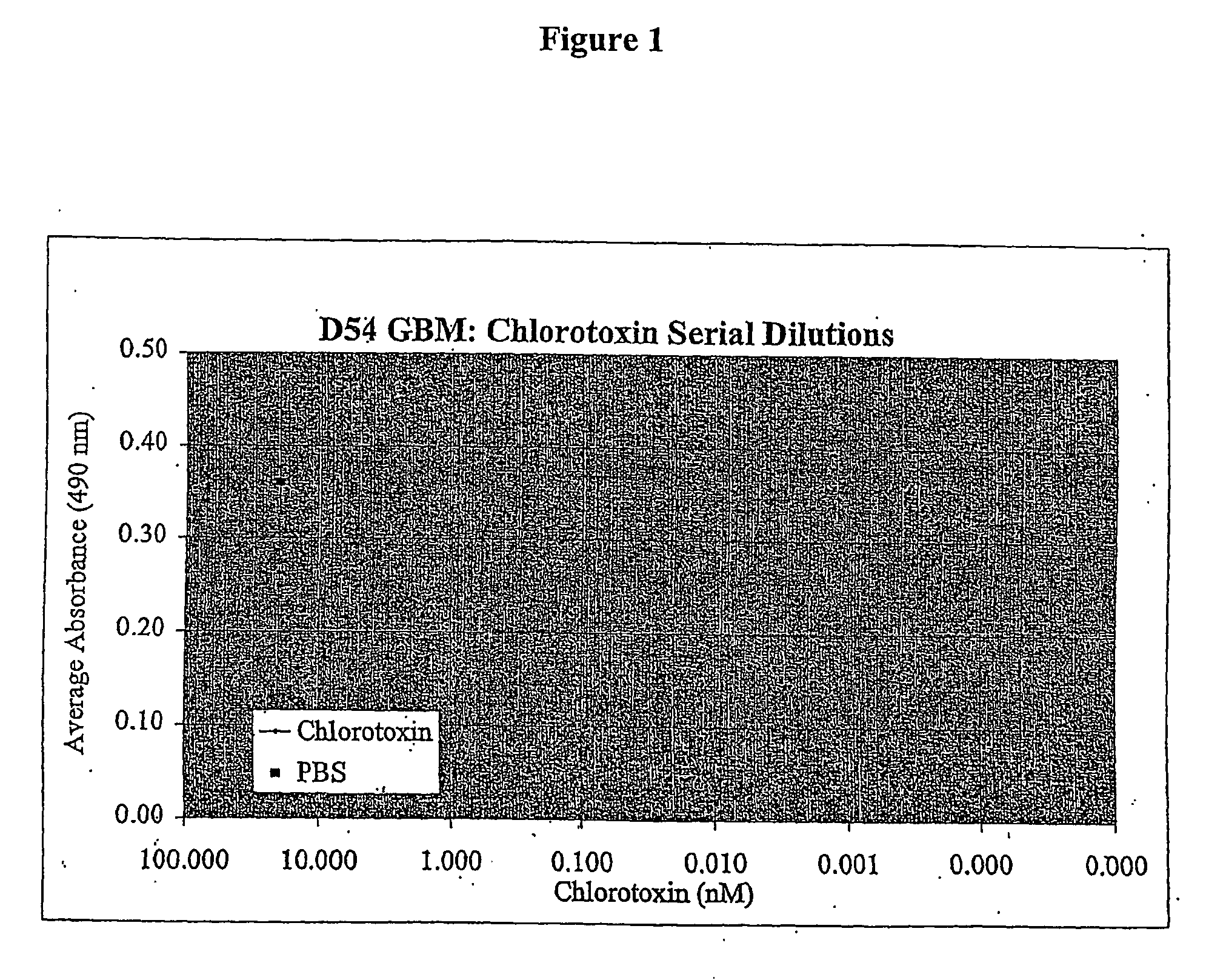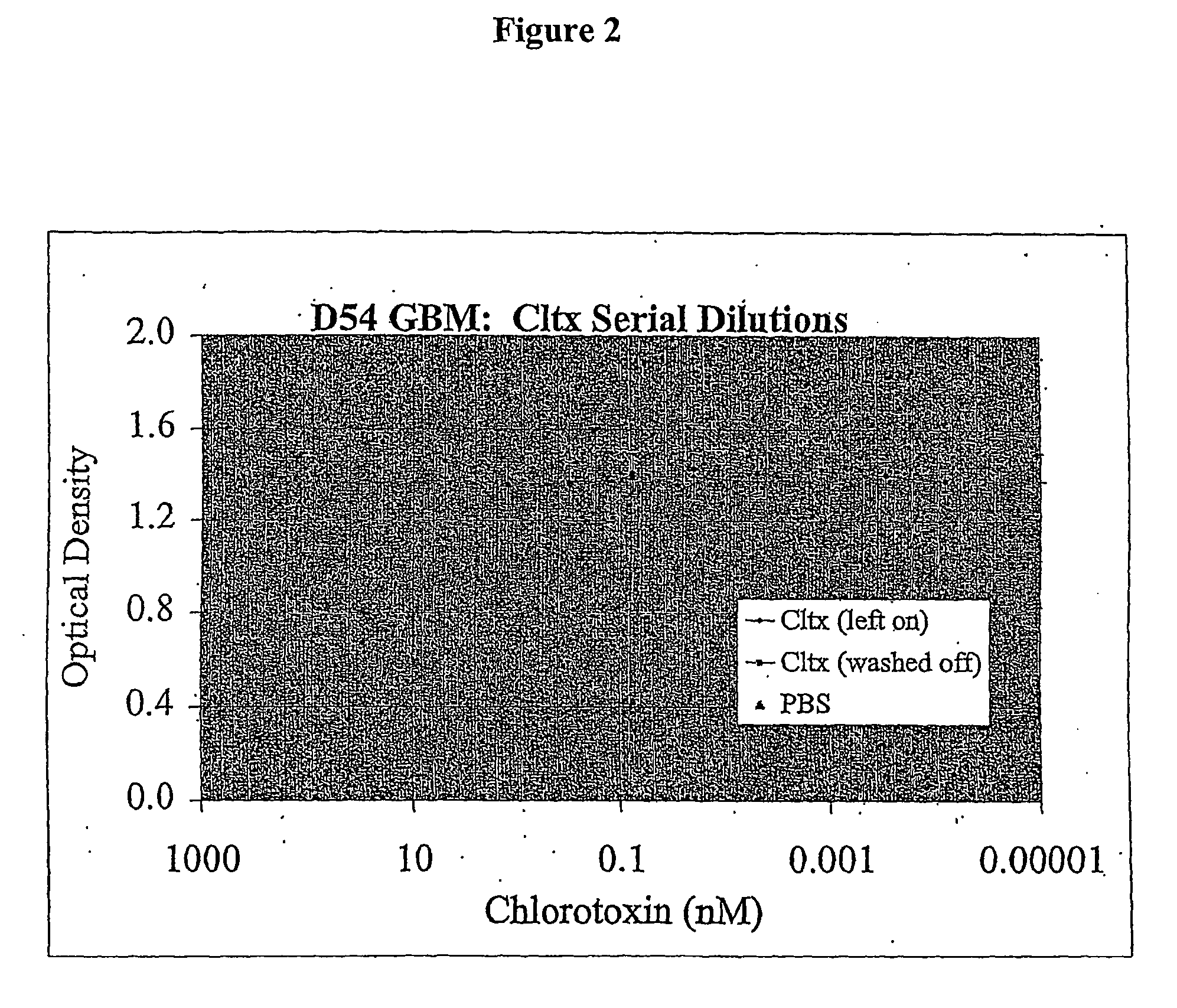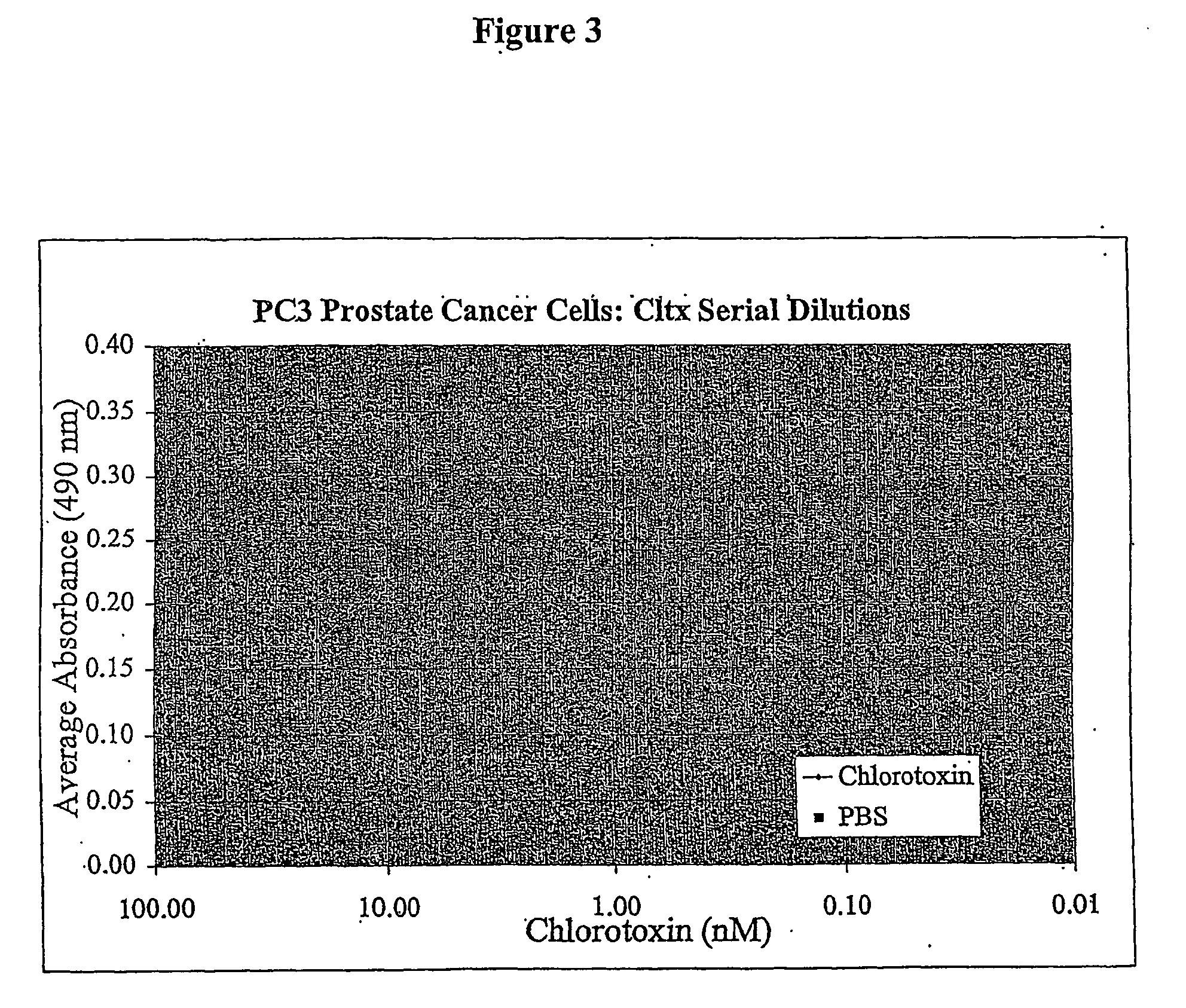Treatment of cell proliferative disorders with chlorotoxin
a technology of chlorotoxin and proliferative disorders, applied in the field of cell physiology and oncology, can solve the problems of difficult to reach the pineal region, malignant, generally inability to remove tumors in this area, etc., and achieve the effect of inhibiting or arresting the growth of tumor cells and effectively inhibiting other types of cancer cells
- Summary
- Abstract
- Description
- Claims
- Application Information
AI Technical Summary
Benefits of technology
Problems solved by technology
Method used
Image
Examples
example 1
[0097] D54 glioblastoma cells were plated at a density of about 1000 cells / well in a 96-well flat bottom plate and incubated in 5% CO2 at 37° C. After twenty-four hours chlorotoxin was added at 1:4 limiting dilutions to a final concentration of 20, 5, 1.25, 0.313, 0.078, 0.0195, 0.0049, 0.0012, 0.00031 or 0.00008 nM. Control cells received vehicle only. Twenty-four hours after treatment, the effect of chlorotoxin was quantified using the MIT mitochondrial enzyme substrate with the Cell Counting Kit-8 (CCK-8) (Dojindo Inc.) according to the manufacturer's instructions. In brief, following the treatment period with chlorotoxin, cells were incubated with CCK-8 reagent. After incubation, plates were read on a microplate reader at a wavelength of 490 nm, with higher absorbance indicating greater cell viability. FIG. 1 shows that chlorotoxin incubation inhibited proliferation of the D54 cells at all concentrations tested down through 0.00120 nM as evidenced by the lower number of viable c...
example 2
[0098] D54 glioblastoma cells were plated at a density of about 1000 cells / well in a 96-well flat bottom plate and incubated in 5% CO2 at 37° C. After twenty-four hours chlorotoxin was added at 1:4 limiting dilutions to a final concentration (in nM) of 20, 5, 1.25, 0.313, 0.078, 0.02, 0.0049, 0.0012, 0.0003, or 0.00008. Control cells received vehicle only. After twenty-four hours, half of the cells were washed free of chlorotoxin, the medium replaced with fresh medium. Cells in both conditions, chlorotoxin left on and chlorotoxin removed, were incubated for an additional four days. Following incubation, the effect of chlorotoxin was quantified using the MTT mitochondrial enzyme substrate with the CCK-8 as in Example 1. FIG. 2 shows that the long incubation time allowed the cells to overcome the effects of chlorotoxin with the additional days of proliferation and chlorotoxin did not appear to inhibit cell proliferation in this instance.
example 3
[0099] PC3 prostate cancer cells were plated at a density of about 1000 cells / well in a 96-well flat bottom plate and incubated in 5% CO2 at 37° C. After twenty-four hours chlorotoxin was added at 1:2 limiting dilutions to a final concentration (nM) of 20, 10, 5, 2.5, 1.25, 0.625, 0.313, 0.156, 0.078, and 0.039. Control cells received PBS vehicle only. Twenty-four hours after treatment, the effect of chlorotoxin was quantified using the MTT mitochondrial enzyme substrate with the CCK-8 as in Example 1. FIG. 3 shows that chlorotoxin incubation inhibited proliferation of the D54 cells at all concentrations tested as evidenced by the lower number of viable cells / well versus PBS control
PUM
| Property | Measurement | Unit |
|---|---|---|
| Dimensionless property | aaaaa | aaaaa |
| Dimensionless property | aaaaa | aaaaa |
| Dimensionless property | aaaaa | aaaaa |
Abstract
Description
Claims
Application Information
 Login to View More
Login to View More - R&D
- Intellectual Property
- Life Sciences
- Materials
- Tech Scout
- Unparalleled Data Quality
- Higher Quality Content
- 60% Fewer Hallucinations
Browse by: Latest US Patents, China's latest patents, Technical Efficacy Thesaurus, Application Domain, Technology Topic, Popular Technical Reports.
© 2025 PatSnap. All rights reserved.Legal|Privacy policy|Modern Slavery Act Transparency Statement|Sitemap|About US| Contact US: help@patsnap.com



